Christine said, “My home has become infested with mold spores and not one company has been able to help us. We are now in a hotel since we started to feel the spores enter our bodies. I need help with cleaning them from my home and my clothes feel like they’re alive and stinging me after washing them a bunch of times!! Money is tight, but I need a home for my kids again so I have to do the removal alone!! Any advice please??!!!”
Mold is a very common household problem. We have many guides for removing it from specific items, such as wallboard or granite (see the list in the Cleaning Tips section of this article). However, when you’re facing the task of removing mold from your home, regardless of where it’s located, there are some general tips that can help you be more successful and feel more confident about the process.
is a very common household problem. We have many guides for removing it from specific items, such as wallboard or granite (see the list in the Cleaning Tips section of this article). However, when you’re facing the task of removing mold from your home, regardless of where it’s located, there are some general tips that can help you be more successful and feel more confident about the process.
Safety First
First, you should know that mold can make people sick, so the best course of action for when there is a lot of mold is to hire a professional. However, sometimes you just have to get the job done yourself, so here are some safety tips to help.
- Wear a respirator or breathing mask. These can be purchased from a hardware store, such as Home Depot, for $20-25. This is a non-negotiable purchase item for a big mold cleaning job. Make sure you buy a mold mask, not a fiberglass mask.
- Wear goggles. Any kind of goggles will work as long as they completely seal around your eyes and do not have a nose cover like swim masks do since the respirator will be covering your nose. In the summer, you can pick up swim goggles at a dollar store. If you want to save yourself a trip, you can pick up a pair of splash goggles at a hardware store for about $3.
- Cover the rest of your body as much as possible. The easiest way to do this is to get a coverall suit from a hardware store. There are some available for $5-15. You can cut this cost by making a cover suit out of trash bags. Cut the bags in the shape needed for each section (pants, top, hood) and duct tape the sections together.
- A great option for gloves is the long latex ones worn for washing dishes, which can be purchased at some dollar stores or any supermarket.
- Don’t forget about your shoes! You can get booties (shoe covers) at major hardware stores as well, or if you are making your own coverall suit out of trash bags, you can just use plastic shopping bags as booties. Be very careful not to slip if you do that though. Scuffing up the bottom of the bags with a nail file may help you to have better traction; just don’t scuff them so much as to make a hole in the plastic.
- Don’t forget to follow the safety procedures for the chemicals that you are using as well. In particular, some require ventilating the area thoroughly or wearing cleaning gloves.
Cleaning Tips
- Turn off the A/C while you are cleaning. This will help to prevent the spores you kick up while cleaning from going into the air vents.
- Seal off any areas of your home that don’t have mold by covering the doorways and air vents with a plastic tarp or tablecloth and tape. Painter’s drop cloths work well for this and are available for about $2 at supermarkets and hardware stores.
- An alternate option for sealing off the non-mold areas is to open windows and set up fans to move the air flow through the house toward the room with the mold and out the window of that room. Verify the air flow direction with a smoking item like a cigarette or incense stick.
- If you’re going to vacuum up the mold, use a vacuum that has a HEPA filter. Without a HEPA filter, the vacuum will just send the mold spores into the air.
- If you don’t have one of these, you can sometimes rent one from a hardware store.
- Another option is to use a shop vac and put it outside with the hose running through a window inside so that all of the exhaust air is expelled outside the house, which is doubly helpful since there won’t be any air blowing around in the room to kick up more spores.
- Don’t forget to vacuum the ceiling fan, ceiling, and walls.
- Don’t forget to clean the curtains and blinds.
- There are HEPA air scrubbers or filters that you can buy to remove spores from the air. These can also be rented from some major hardware stores.
- Although you want to thoroughly remove the mold that is on a surface, you don’t want to soak the material (which would then provide the mold with fuel to grow back), especially materials that will have long drying times like drywall or upholstery. Try to use the minimum amount of water needed.
- Use discretion when choosing a mold-killing chemical as some can be serious health concerns as well. A quick internet search can often yield valuable health information for a specific product. If you decide to use a commercial product, one that we would recommend is Concrobium.
- Any cleaning supplies that you use to remove the mold should be thrown away afterward, so it’s a good idea to get cheap cleaning supplies for this task. You can usually find mops, scrub brushes, spray bottles, and a variety of other cleaning products at a dollar store.
- Anything in your home that has mold on it and that can be moved should be taken outside before you clean it so that you spread as few spores within the house as possible.
- Sunlight is a natural antifungal. Visible mold should be brushed off items outside, then the item can be placed in direct sunlight for 30-60 minutes to kill any spores that may remain on the surface. Porous items like upholstery will require a deeper cleaning to kill the spores below the surface though, so sunlight is most useful for nonporous items and as a secondary cleaning option.
- White vinegar is a natural antifungal that is safe to use on most surfaces. (Always test a cleaning solution on a small hidden area first to look for any adverse reaction.) Mix equal parts vinegar and water in a spray bottle, then use this solution to spray porous items or anything that cannot be moved outdoors.
- There are mold prevention paints and primers that can be used to cover areas where mold was growing, such as on walls or on the subfloor under carpeting. Again, always use discretion when selecting a chemical to use in your home.
- Here are links to some of our mold removal guides. If you don’t see a guide you need, try searching the site to find more guides.
Preventing It From Returning
- Mold can’t grow without moisture. After you finish cleaning, putting a dehumidifier in the area where the mold was located, or even putting one in each room of the house, can help to prevent the mold from returning. These can be HEPA dehumidifier machines, room dehumidifiers like Damp Rid, or simple DIY versions like a bucket of charcoal briquettes.
- Try to determine the source of moisture in your home that allowed the mold to grow in the first place. Once you have found the problem, work to remove the moisture.
- Some potential culprits are leaky plumbing or roofs, drafty windows, or a foundation leak.
- Go in the attic after a rain to look for moisture.
- Run your fingers along the edge of the carpet in each room to feel for any moisture, especially rooms with exterior walls or walls that contain plumbing. If there is a suspicious area, such as a pool of water around the outside of your home at one spot, pull up the carpet in that area to look for any mold on the padding or subfloor.
- There are moisture meters that you can buy to check for moisture in walls.
- Removing light switch covers and electrical outlets can give you a window into walls to visually inspect for mold.
- Double check that the surfaces in your shower or tub are properly caulked, especially around the towel bar, soap ledge, or faucets.
- Get a weather guage to monitor the relative humidity in your home. Keeping the RH in your home below 40% is ideal.
- Re-caulking
%27%20fill-opacity%3D%27.5%27%3E%3Cellipse%20fill%3D%22%23fff%22%20fill-opacity%3D%22.5%22%20rx%3D%221%22%20ry%3D%221%22%20transform%3D%22matrix(-13.01418%2031.30051%20-137.58165%20-57.20393%2052%20139)%22%2F%3E%3Cellipse%20fill%3D%22%234b4b4b%22%20fill-opacity%3D%22.5%22%20rx%3D%221%22%20ry%3D%221%22%20transform%3D%22rotate(5.2%20-209.5%20633.7)%20scale(112.87258%2051.65373)%22%2F%3E%3Cellipse%20fill%3D%22%23b7b7b7%22%20fill-opacity%3D%22.5%22%20rx%3D%221%22%20ry%3D%221%22%20transform%3D%22rotate(148%2048%2077.3)%20scale(73.48883%2038.64735)%22%2F%3E%3Cellipse%20fill%3D%22%23f5f5f5%22%20fill-opacity%3D%22.5%22%20rx%3D%221%22%20ry%3D%221%22%20transform%3D%22matrix(12.0718%20-21.86803%2039.98527%2022.07305%2023.2%20135.5)%22%2F%3E%3C%2Fg%3E%3C%2Fsvg%3E) windows will help to keep out unwanted moisture from the air, especially if you live in a humid climate.
windows will help to keep out unwanted moisture from the air, especially if you live in a humid climate. - Check your dryer exhaust hose to ensure it’s fully sealed and empties to an area outside your home.
- One of the easiest ways to add moisture to your home is by taking a hot shower and creating a lot of steam in the bathroom. Turning on the bathroom fan before you start showering will help to prevent mold by quickly removing the moisture. Only do that if the fan vents to the outside rather than into an attic though, or you will simply be moving the moisture to a new area of your home. Leaving the bathroom door open helps to ventilate the area as well.
- Running the A/C is a good preventative for mold as it helps to dry out the air.
- Look around the outside of your home for any areas that have mold, such as on the sidewalk, roof, or in the garbage can, and work to remove the mold from those areas. Walking by moldy areas is an easy way to track mold spores into your home.
Additional Tips:
- There are mold swab kits available that you can use to determine exactly what kind of mold is in your home if you’re curious.
- With the A/C off while you clean and your body fully covered, you will probably start to get hot. Don’t forget to stay hydrated, which can help you to stay cooler, and take breaks whenever needed. (Go outside before you remove the respirator to have some water.)
- After doing this, you might feel a little creepy or yucky, even if you didn’t get any spores on you. Consider jumping in a pool or hot tub; the chlorine bleach will kill any spores that may be on you and make you feel all-over clean even more than a shower.
- Keep in mind that chlorine bleach should never be mixed with ammonia or any acid, such as vinegar, as it will create toxic fumes. (In other words, don’t jump in the pool and then rinse your hair with vinegar right afterwards, and of course, do not use any of these products on a surface without at least washing the surface between applications.)
- If you still feel creeped-out, have a good meal with antifungal foods like garlic, ginger, or onions.
- Smoking weakens your lungs, making you more susceptible to sickness from inhaling mold, so if you’re a smoker, having mold in your home is a great reason to quit. (Some info to help: nicotine leaves your system within about 72 hours; after that, it’s just about kicking the mental habit, and it only takes the mind about 21 days to form a new habit.)
- Try not to stress out. Stress lowers your immune system, which can make you more susceptible to getting sick. The mold can be removed and your home can be made safe again, it will just take some work, so turn on some tunes while you clean and try to stay positive.
Sources:
- The Queen of Clean’s Complete Cleaning Guide by Linda Cobb
- The Complete Idiot’s Guide to Green Cleaning by Mary Findley and Linda Formichelli
- Cleaning Plain & Simple by Donna Smallin
- Natural Green Home Cleaning for Beginners by R. Kishore
- The Country Almanac of Housekeeping Techniques That Save You Money by Richard Freudenberger and the Editors of Backhome Magazine
- Handy Household Hints from Heloise by Heloise

 windows will help to keep out unwanted moisture from the air, especially if you live in a humid climate.
windows will help to keep out unwanted moisture from the air, especially if you live in a humid climate.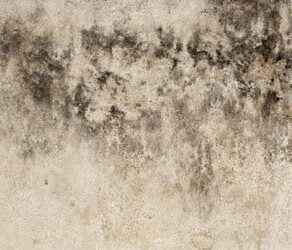
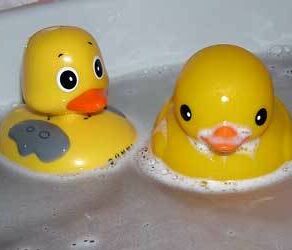
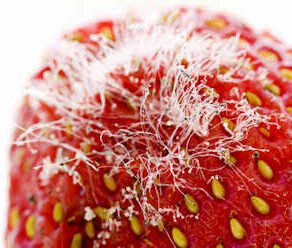
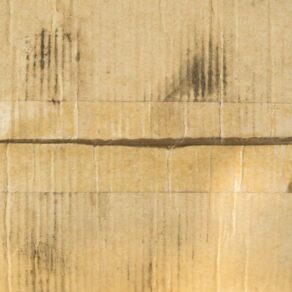
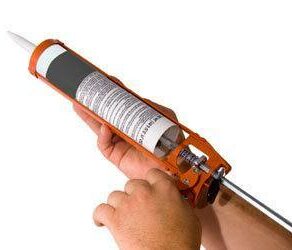
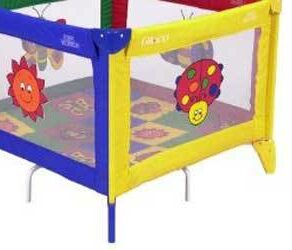


Leave a reply